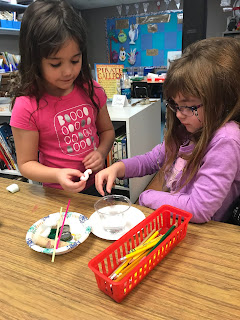We interrupt our regularly scheduled program,
to bring you this wonder-filled lesson.
Our Monday morning journal writing would have to wait.
The Puget Sound area had been socked in by fog for several days and so we took advantage of the phenomenon
and headed outside for an inquiry lesson.
We wonder:
What is fog?
Why are we getting wet?
How do water drops get on a spider web?
How do they stick?
Why does it curve?
Where did the spider go?
How do spiders start their webs?
How many spider webs can you find?
Are they all the same?
How long will this fog last?
Where does it go?
How does it end?
What happens when the sun comes out?
Where is the sun?
Where is the sun?
Is this fog "as thick as pea soup"?
What do you think that means?
How can you describe fog?
How can you draw a dew-drop filled spider web?
How would you start it?
Would you start it like a spider?
How can you draw fog?
As you can tell, one question leads to another question,
which leads to another.
And so it continues.
Sometimes the lesson is just taking time to enjoy
the wonder.













































